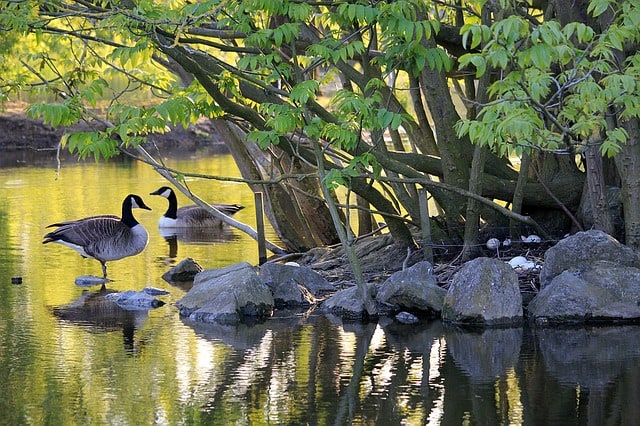Biodiversity is fundamental as it ensures natural sustainability of all life on earth not only for the current population but also for the future generations. However, biodiversity continues to be threatened and in consequence, it affects the survival of humans. Various concerns have been raised by environmental advocates and agencies such as the UNEP, WWF, GreenFacts Foundation, and EPA with regards to the threats posed on many of the world’s ecosystems which are increasingly deteriorating in state by becoming unhealthy and unbalanced.
The CBD (Convention on Biological Diversity) definition is the internationally accepted definition of biodiversity. It says, ‘Biological diversity’ means the variability among living organisms from all sources including, inter alia, terrestrial, marine and other aquatic ecosystems and the ecological complexes of which they are a part; this includes diversity within species, between species and of ecosystems.
According to the reports, here are the six major threats to biodiversity and actions that can be taken to address the situation.
Various Threats to Biodiversity and Their Solutions
- Habitat loss and deforestation
The dramatic alteration of habitats directly threatens biodiversity. When such habitats are lost due to deforestation and other anthropogenic activities such as mining, the respective environments are unable to provide shelter, food, water, or breeding grounds for the living organisms.
In other words, it leads to unhealthy and unbalanced ecosystems that result in the loss of biodiversity and extinction. Deforestation, in particular, is associated with the destruction of about 18 million acres of forest habitats annually, damaging the ecosystems on which countless species depend on for survival.
Solution
Curbing the problem of deforestation and habitat loss mostly depend on policy and implementation of laws. For one, corporations and companies can take up the wise practice of refusing to use paper and timber products that encourage deforestation. Likewise, awareness creation should be done so that consumers can desist from supporting companies or manufacturers that use timber and paper to make their products and most importantly, those that utilize unsustainable natural resource extraction or manufacturing processes. Governments and regulatory agencies should also take the lead in ensuring the enactment of stronger forest protection laws and policies. Individuals and organizations can also participate by support environmental conservation through charities and creating awareness.
- Climate change
The global climatic changes throughout the history of the plant have definitely modified life and ecosystems in the planet. As an outcome, crucial habitats have been destroyed and a number of species have gone extinct with a huge majority at the verge of extinction. It therefore means that if the global temperatures continue to change drastically, especially due to anthropogenic activities that accelerate the process, the threats to biodiversity will continue to expand as ecosystems and species will not be able to adapt.
For instance, the decreasing Arctic sea ice and the increasing ocean temperatures are to blame for the changes in vegetation zones and deterioration of marine wildlife. Besides, the ecosystems and species that cannot cope die out.
Solution
Climate change is mostly exacerbated because of human activities with regards to destroying carbon sinks and their dependency on using fossil fuels. Hence, if effective actions can be taken to reduce the amount of carbon footprint, the world can be assured of a better tomorrow and less worries about climate change.
Individuals, organizations and industries need to reduce their carbon footprints and they should equally participate in awareness creation. Cities and international governments can also charge for carbon emissions and enact policies that curtail activities which destroy the carbon sinks.
- Overexploitation of resources
On the account of the ever rising human population, there has been a correlational increase in demand for manufactured products, essential goods and services. The high demands of these things have resulted in overfishing, overhunting, over-harvesting and excessive mineral resource extraction which has highly contributed to biodiversity loss. Mineral extraction, poaching, excessive logging and other forms of resource exploitation for profit has heightened the risks of species extinction. It has also altered natural habits therefore destroying food chains and interfering with the ecological balance.
Solution
Continued awareness creation and conservation are the main strategies for managing overexploitation, particularly pertaining to overfishing, over-harvesting and poaching. Relevant environmental protection agencies and governments also need to implement rules curtailing practices that cause overexploitation of resources. Individual effort should aim towards being mindful of the products we consume and buy.
- Nutrient loading
As the agricultural sector continue to expand and serve towards attaining the world’s food security, it has also more than doubled dependence on the use of fertilizers on a profitable scale. Accordingly, the use of fertilizers beyond limits has contributed to increased level of nitrogen and phosphorous nutrients in the natural ecosystems. As much as the nutrients exists naturally in all ecosystems, the manufacturing of artificial fertilizer with reactive nitrogen and phosphorus nutrients to increase crop productivity has altered the ecological balance over time thereby threatening the survival of ecosystems. Particularly, the survival of species that flourish in phosphorous or nitrogen-poor environments are increasingly threatened. Furthermore, leaches and entry into water systems have resulted in increased eutrophication and the creation of anoxic (oxygen deficient) zones in marine habitats.
Solution
To address the problem of nutrient loading, considerable improvements are needed to ensure the effectiveness of the nitrogen and phosphorus fertilizers used within production systems. The artificial production of these fertilizers should not only aim at meeting the global food demands but also decreasing environmental problems.
GreenFacts Foundation suggests that if the globe’s cereal production systems can attain a 20% gain in nitrogen-use efficiency, it would cut back about 6% of the global production of reactive nitrogen. Farmers should also reduce their dependency on using high quantities of nutrient fertilizer and seek alternatives such as leaving the land fallow after harvesting to encourage nutrient recycling.
- Environmental pollution
Pollution has continued to harm the biosphere by releasing and depositing toxic chemicals into the atmospheric, terrestrial and marine systems. With the high levels of pollution every year, it is gradually disrupting the Earth’s ecosystems as the chemicals released potentially influences species’ habits and ecosystems. Pollution has also depleted ozone levels, created dead zones in marine habitats due to toxicity and acid rains, altered species feeding and breading habits, and even caused the death of many species due to oil spills or the consumption of plastic and other toxic substances.
Solution
There are a number of ways for curbing pollution. Anti-pollution laws and policies at the local, state and international level are the most practical for curbing pollution as they play a critical role in restricting pollution. Individuals can also take a number of initiatives to fight water, air and land pollution by embracing effective actions such as conserving energy at home, recycling, use of safe and non-toxic products, and using public transport.
Awareness creation and advocacy is as well essential. It can be done through the media, online educative forums, and in various institutions to make people realize and understand the causes and consequences of environmental pollution. The use of renewable and green energy sources can also lower dependence on fossil fuels thereby reducing green house gas emissions that lead to global warming and the formation of acid rain.
- Invasive species
Invasive species are the non-native species that invade normal and healthy ecosystems and threaten the survival of the native species either by attacking them or competing for the habitat’s resources. Accordingly, they upset the native biota and ecosystems thereby causing extinctions and massive threats to biodiversity.
According to the GreenFacts Foundation, nearly 40% of all animal extinctions since the 17th century are associated with invasive alien species. Similar reports also indicate that 80% of the threatened species in the Fynbos biome of South Africa are endangered as a result of invading alien species. Besides, the report emphasizes that the cumulative environmental biodiversity losses of more than $100 billion in the UK, US, South Africa, Brazil, India, and Australia are because of invasive pests.
Solution
The problem of invasive alien species is global and for this reason, it requires intervention at the local, state and international level. Local authorities and states need to establish systems to manage and prevent invasive alien species through risk assessments as a strategy of predicting the possibility of species becoming invasive. The assessments should also aim at determining the potential ecological damages and put in place effective preventive measures to counter the likely environmental impacts.
Therefore, creating systems to stop the introduction of invasive alien species even before it happens, quickly eliminating newly detected invaders, and effectively monitoring new invasions are the most efficient strategies. International bodies and scientist can assists in research and information quantification by using more creative means such as Google street view and other advanced technological techniques.







